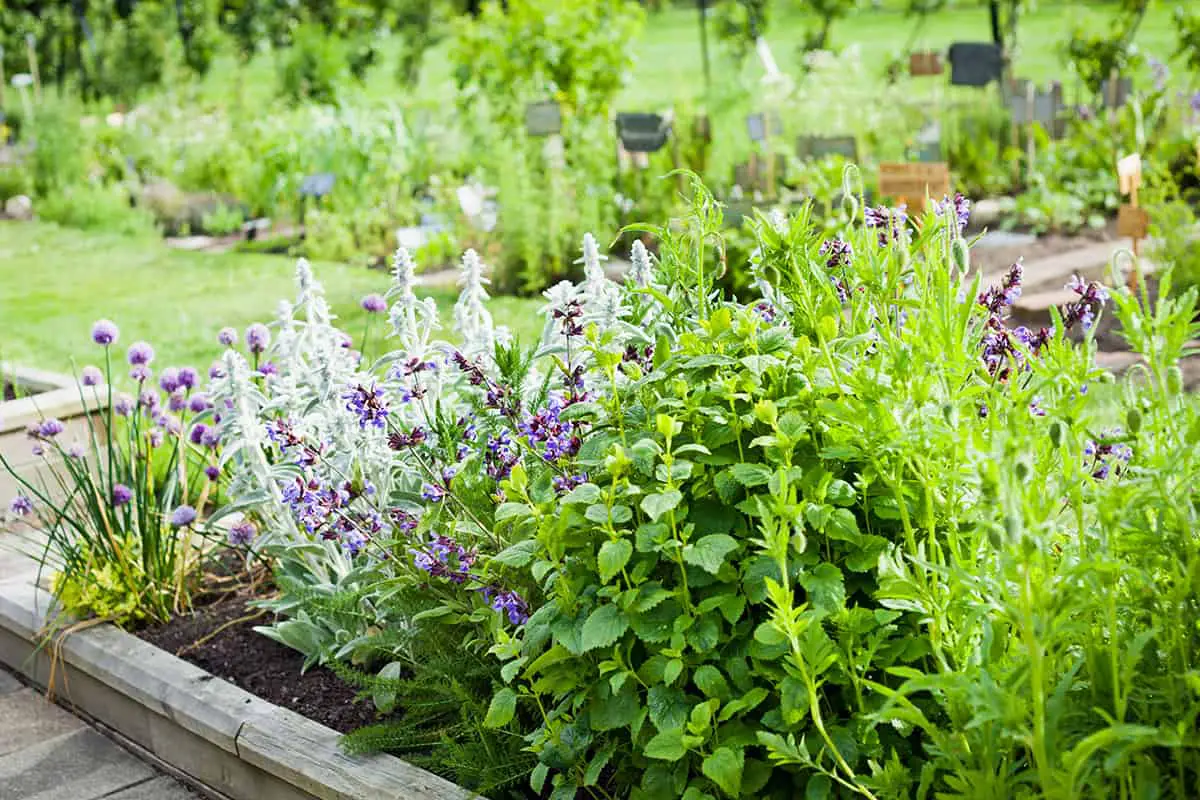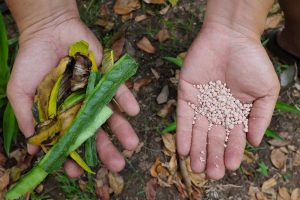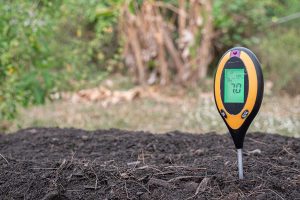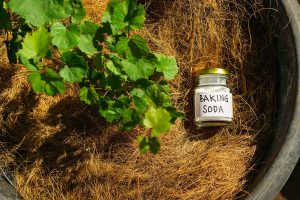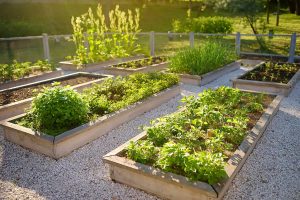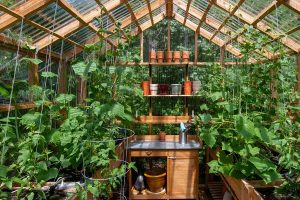Every year, the same vibrant poppies and lush dill reappear in the garden, all without any work. This is the effortless wonder of self-seeding plants. They drop seeds after blooming, promising a spontaneous burst of life in the coming seasons. Ideal for anyone looking to add a touch of self-reliance to their garden, these plants keep the beauty coming, year after year, with minimal intervention.
Here, we’ll go into detail about popular self-seeding plants that keep your garden vibrant year after year with minimal effort.
Table of Contents
- California Poppy (Eschscholzia Californica)
- Forget-Me-Not (Myosotis Sylvatica)
- Foxglove (Digitalis Purpurea)
- Cosmos (Cosmos Bipinnatus)
- Nigella (Nigella Damascena)
- Lupine (Lupinus Spp.)
- Sunflower (Helianthus Annuus)
- Poppies (Papaver Spp.)
- Cleome (Cleome Hassleriana)
- Morning Glory (Ipomoea Purpurea)
- Hollyhock (Alcea Rosea)
- Sweet William (Dianthus Barbatus)
- Zinnia (Zinnia Elegans)
- Alyssum (Lobularia Maritima)
- Snapdragon (Antirrhinum Majus)
- Queen Anne’s Lace (Daucus Carota)
- Black-Eyed Susan (Rudbeckia Hirta)
- Columbine (Aquilegia Spp.)
- Coral Bells (Heuchera Sanguinea)
- Verbena (Verbena Bonariensis)
California Poppy (Eschscholzia Californica)
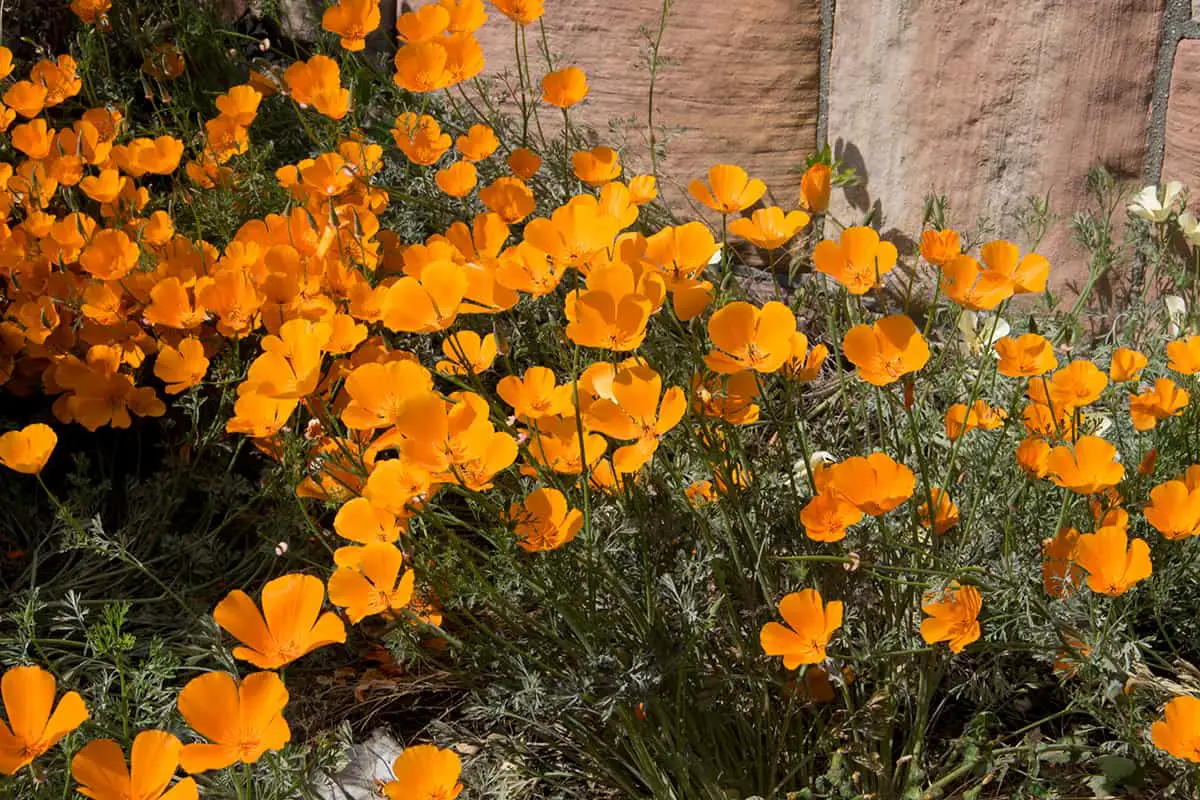
- Mature size: Up to 12 inches tall and wide
- Sunlight: Full sun to partial shade
- USDA zones: 6 to 10
The California Poppy, scientifically known as Eschscholzia californica, is renowned for its vibrant orange flowers.
This poppy prefers well-drained soils and, once established, thrives with little water. If you’re aiming to introduce self-seeding plants into your space, California Poppy should be on your list. They tend to bloom between March and October, adding a long-lasting splash of color to your landscape. The petals open with sunlight and close as evening approaches. You can enjoy both their beauty and utility as the young stems and leaves can be consumed. They display resilience and adaptability, popping up year after year with new growth.
To start your California Poppy patch, sow the seeds directly in the fall or a few weeks before the last frost for spring blooms. Ensure you keep the soil moist for optimal germination. After the blooming season, the petals give way to seed capsules, which will split, dispersing seeds and promising new growth for the coming year.
Forget-Me-Not (Myosotis Sylvatica)
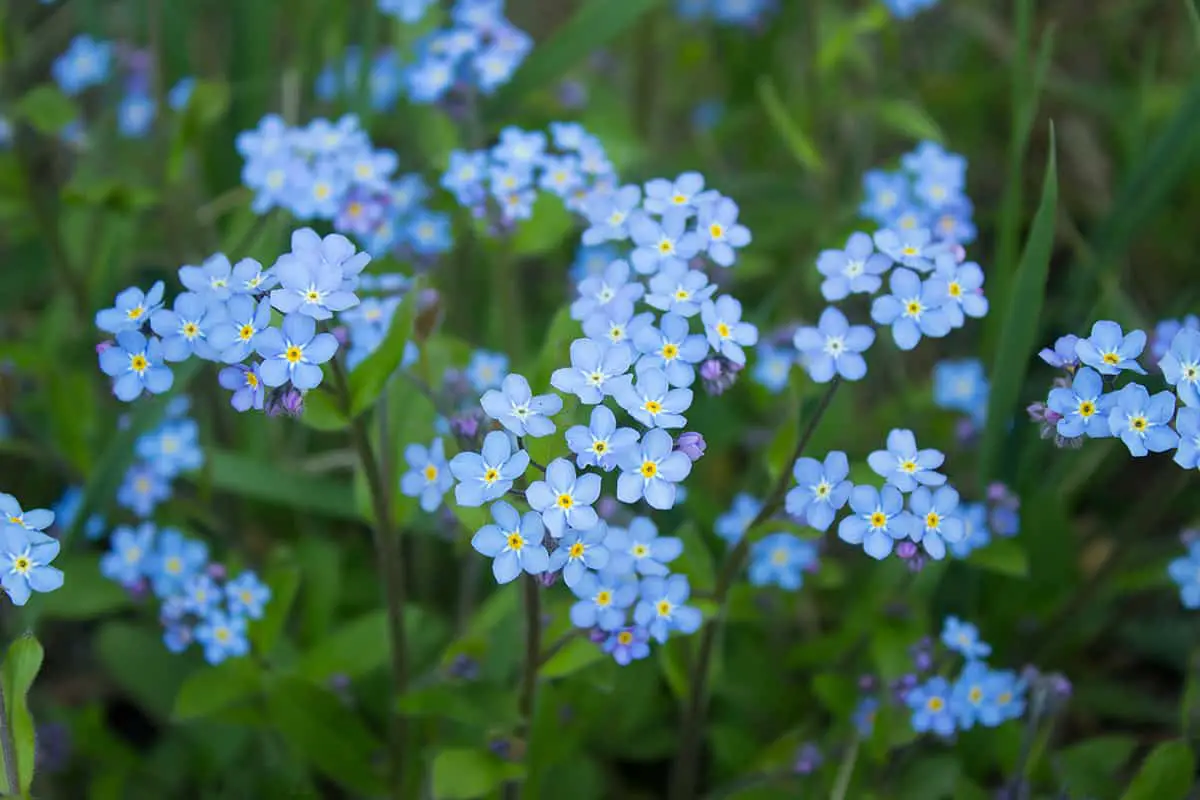
- Mature size: Grows 5-12 inches tall
- Sunlight: Prefers partial shade to full sun
- USDA zones: Suitable for zones 3-8
Myosotis sylvatica, or Forget-Me-Not, is a charming addition to your garden. You’ll admire its small, delicate blue flowers with yellow centers. Recognizable by its foliage and blossoms, it thrives in various conditions, attracting pollinators.
Plants perform well in the morning sun and afternoon shade, particularly in hotter climates. This plant can self-seed, ensuring a continuous presence in your garden. If you’re patient, you can grow Forget-Me-Not as a biennial, sowing seeds in the summer for blooms the following year. Alternatively, for blooms in the same year, start seeds indoors about 8-10 weeks before the last spring frost.
This perennial is often grown as an annual, providing flexibility in garden planning. Remember to deadhead after blooming to manage self-seeding if you prefer a more controlled garden design. Remember, in some regions, forget-me-nots can spread widely; check if they are suitable for your area.
Foxglove (Digitalis Purpurea)
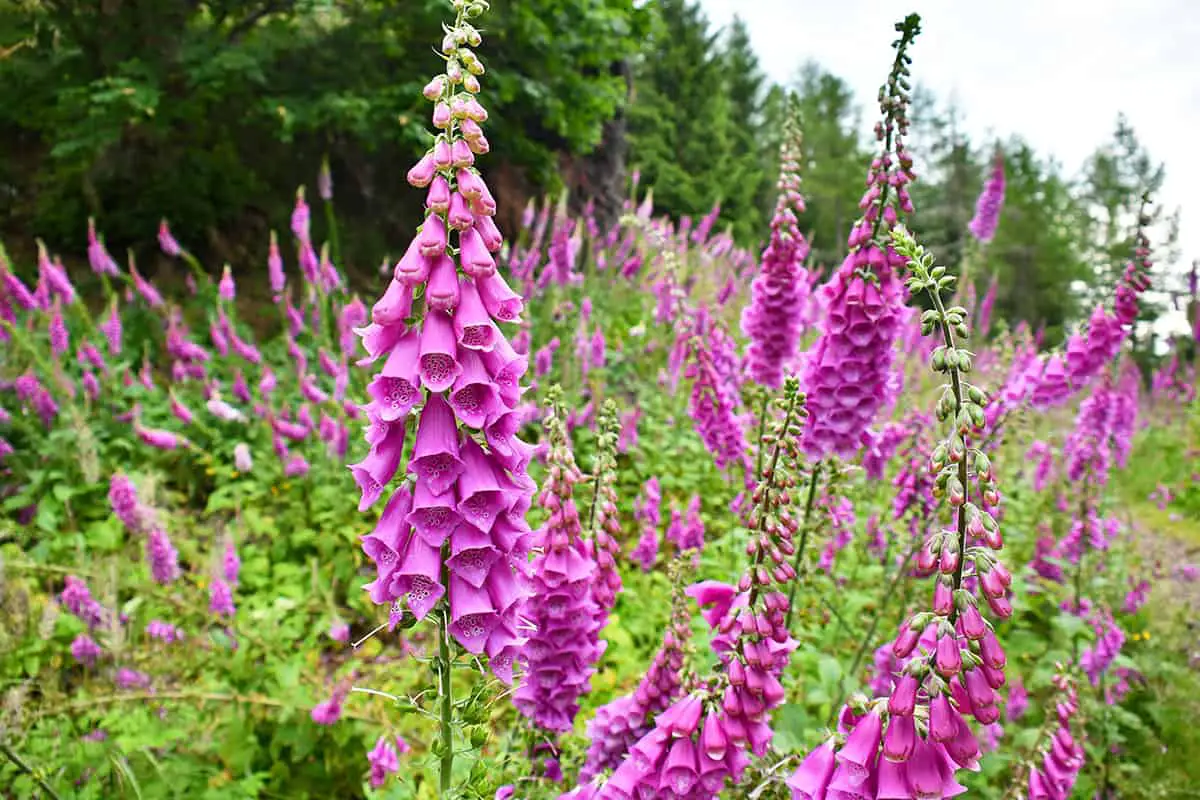
- Mature size: Grows up to 5 feet tall and 18 inches wide
- Sunlight: Thrives in partial sun to light shade
- USDA zones: Best in zones 4 through 9
Foxglove is a standout in your garden. Known for its towering spikes of bell-shaped flowers, this plant creates a bold statement. Its blooms come in shades of purple, pink, and white, adding vertical interest to your garden layout.
When you plant foxglove, you introduce a self-seeding biennial. This means it has a two-year lifecycle. In the first year, you’ll see a rosette of leaves. In the second year, it will produce flowers and seeds. These seeds can sprout new plants in subsequent years, ensuring foxglove’s presence in your garden.
Foxglove prefers well-drained soil that’s rich in organic matter. Make sure the soil doesn’t dry out completely. It’s also important to note, while beautiful, all parts of the foxglove plant are toxic if ingested. Be mindful of this if you have pets or children.
Cosmos (Cosmos Bipinnatus)
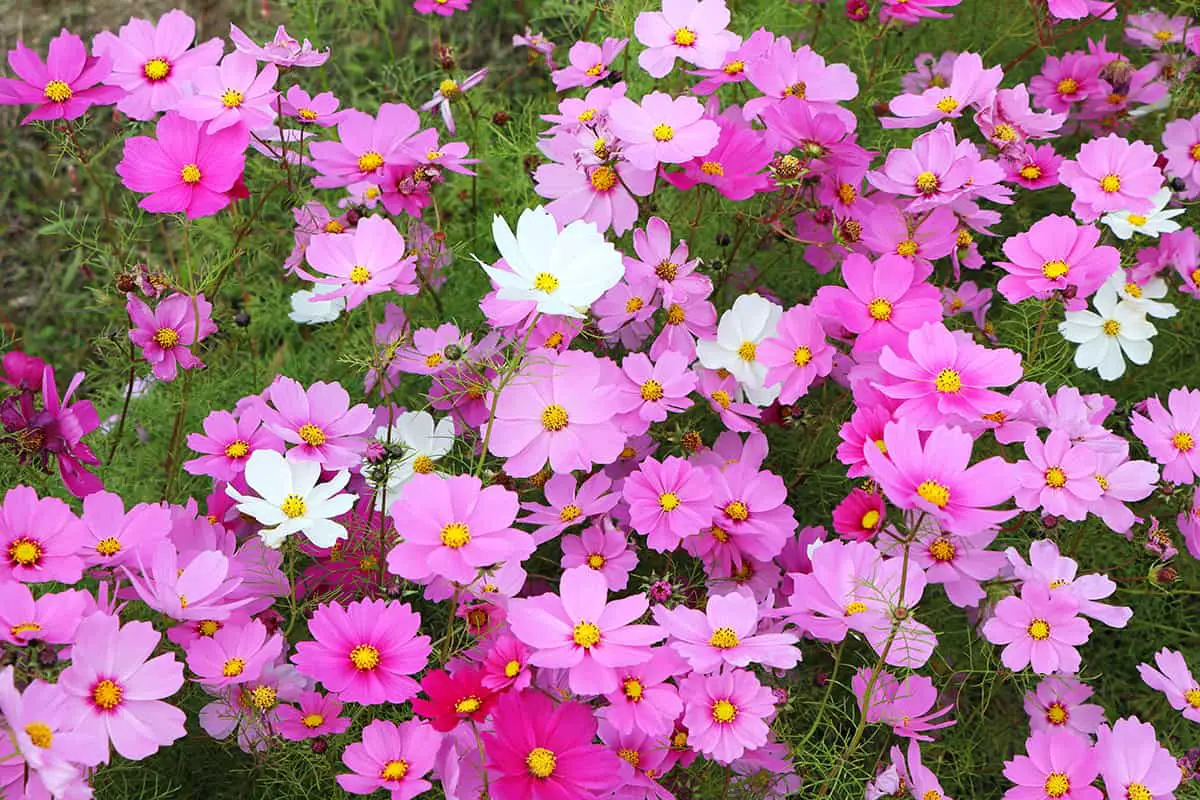
- Mature size: Up to 5 feet tall
- Sunlight: At least a half-day of direct sun
- USDA zones: 2-11
Cosmos Bipinnatus, often known as Garden Cosmos, is an annual flower. This plant’s striking daisy-like flowers make it a favorite among gardeners. You’ll admire the variety of shades it offers, from pink to white.
Your Cosmos Bipinnatus will reseed itself each year. You get a hassle-free gardening experience with its self-seeding ability. Plant it after the last frost, when soil is above 65°F, to ensure germination. Remember to maintain moist soil initially.
For continued growth, choose a location with well-drained soil. Cosmos thrive in hot, dry conditions, a testament to their hardiness. Its ferny foliage and tall stature provide a backdrop for shorter plants. You can cut flowers for a lasting indoor bouquet.
Nigella (Nigella Damascena)
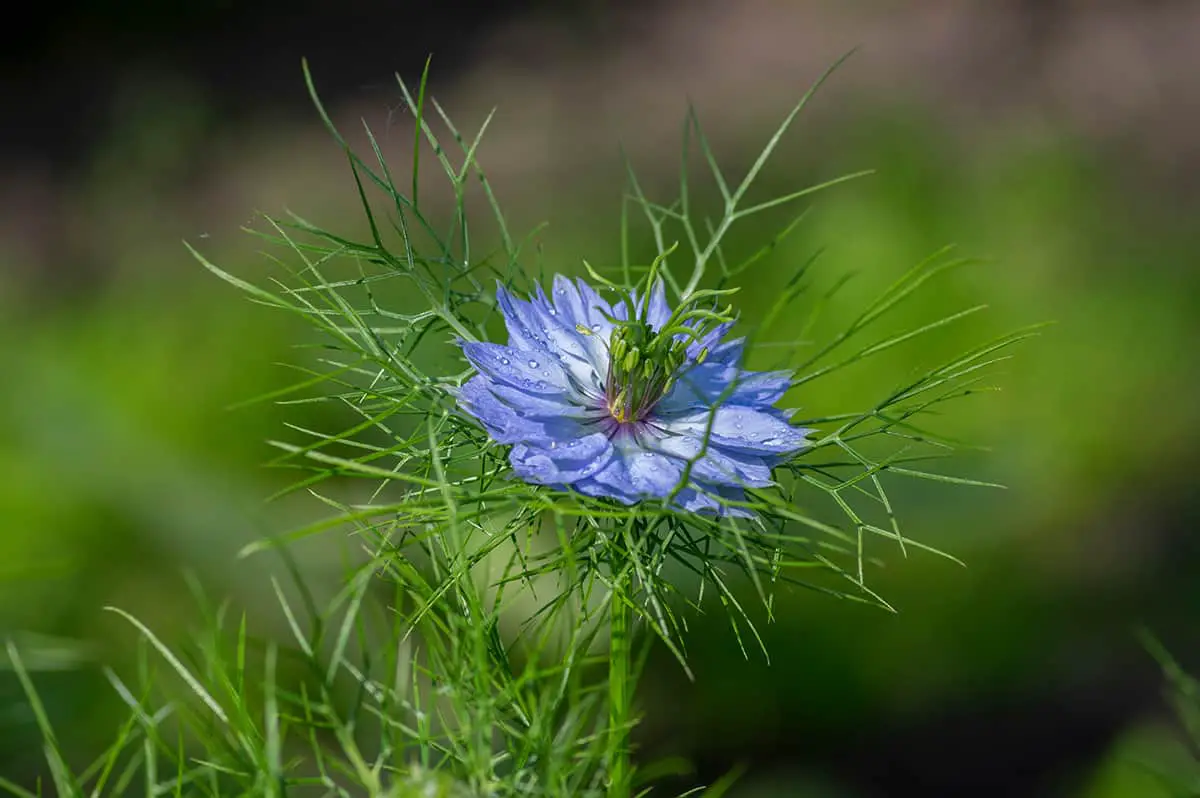
- Mature size: 1-2.5 ft tall, up to 1 ft wide
- Sunlight: Prefers full sun to partial shade
- USDA zones: Thrives in zones 2-11
Nigella Damascena flowers are known for easy self-seeding. You’ll often find them blooming in the spring to early summer. They offer charming blooms with feathery foliage that add texture to your garden.
Their intense black seeds are a distinctive feature. When you plant Nigella, you can expect rapid growth under the right conditions. After the blooming season, the seed pods can be left to spread seeds for the next year.
Lupine (Lupinus Spp.)
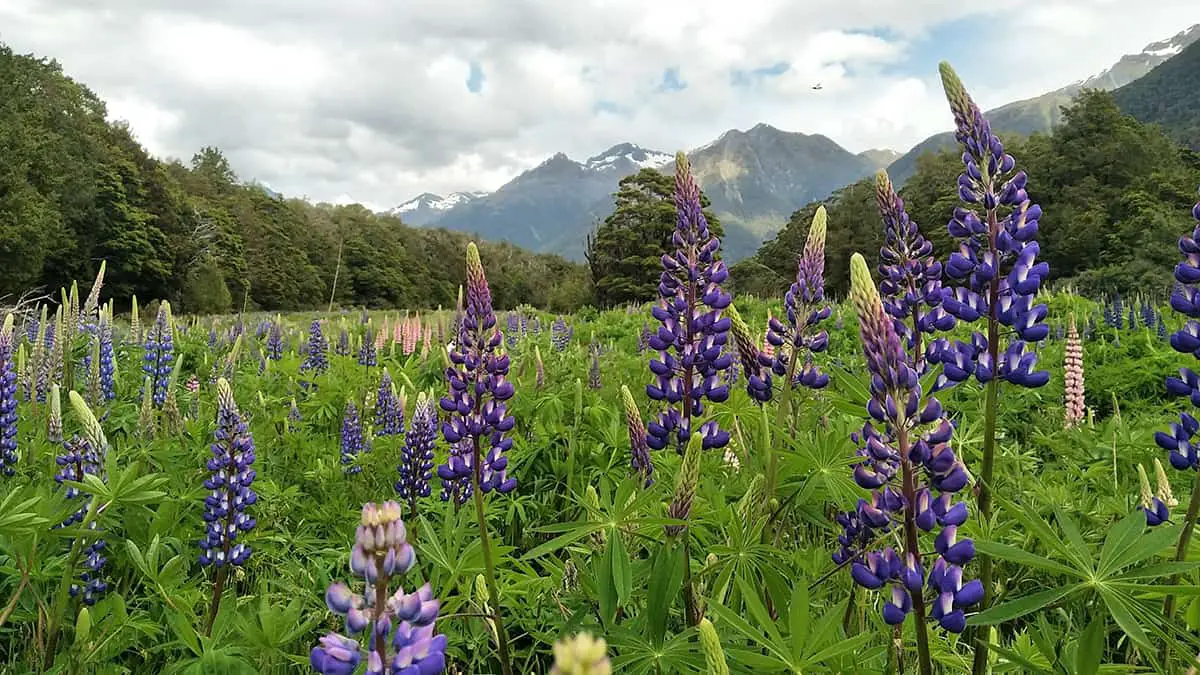
- Mature size: Ranges 1-2 feet tall
- Sunlight: Prefers full sun to partial shade
- USDA zones: Generally hardy in zones 3-8
Lupines stand out in your garden with their vibrant spikes. They thrive in well-drained soil, often enriching it by fixing nitrogen.
Plant lupines in the fall for a burst of spring color. They self-seed, ensuring their return year after year.
Your lupines need space. Plant seeds or young plants with room to grow. This allows their taproot system to develop properly. Always remove spent flowers to encourage self-seeding.
Sunflower (Helianthus Annuus)

- Mature size: Grows up to 12 feet tall
- Sunlight: Prefers full sun
- USDA zones: Thrives in Zones 2-11
Sunflowers brighten your garden with vibrant blooms. They belong to the genus Helianthus, and are known for their large, showy flowers. This plant is annual, completing its life cycle in one year.
Your garden will benefit from the sunflower’s self-seeding ability. After the first planting, they will likely sprout up again the following year. They love sunlight, so place them in a location where they receive full exposure.
Consider leaving sunflower seed heads in your garden. They provide food for birds during fall and winter. For your own use, sunflower seeds are a tasty snack and a source of oil.
Poppies (Papaver Spp.)
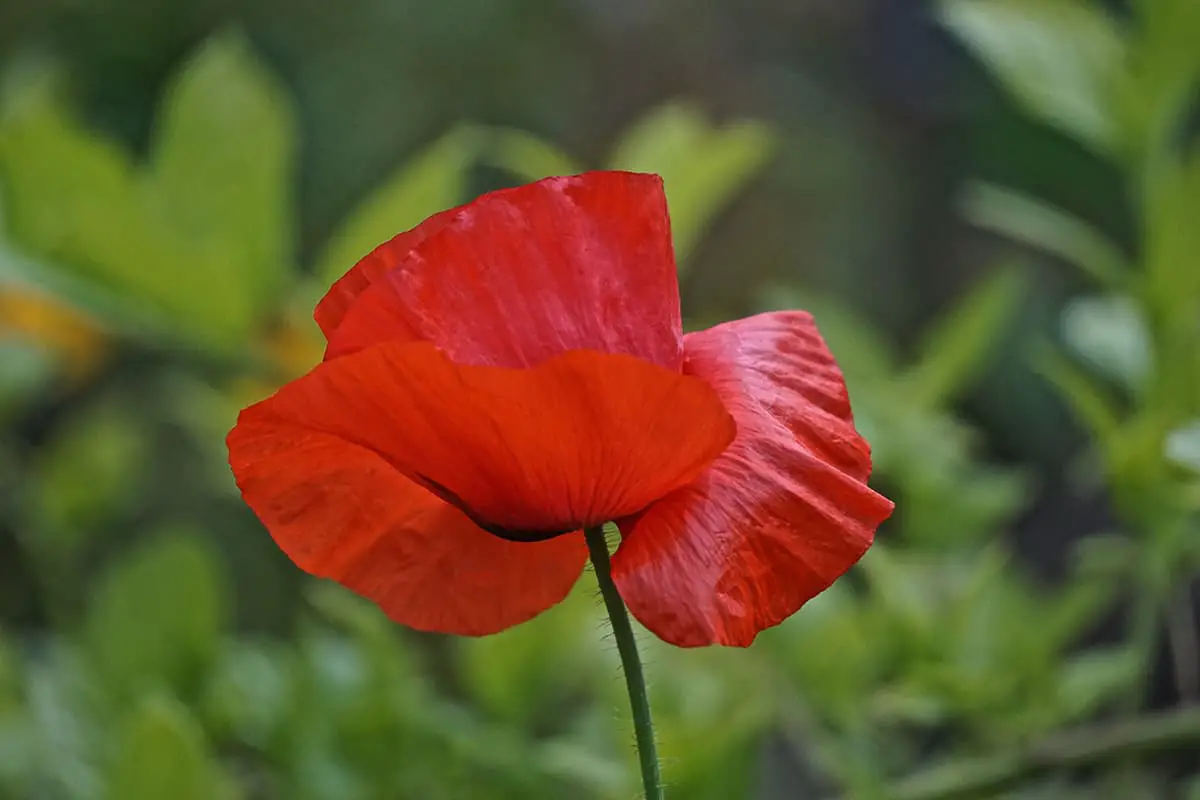
- Mature size: Typically reaches 60-120 cm in height
- Sunlight: Prefers full sun to grow best
- USDA zones: Thrive in zones 3 through 9
Poppies, belonging to the Papaver genus, are self-seeding plants that grace gardens with their vibrant blooms. You can expect these plants to regrow annually once established in your garden.
The Papaver somniferum species, also recognized as breadseed or opium poppy, has beautiful flowers and produces edible seeds. You can enjoy its showy blossoms and harvest the seeds for culinary uses.
Poppies flourish in full sun, so position them accordingly in your garden for optimal growth. These plants adapt well to various soil types, although they prefer well-drained soils. Be mindful to avoid overwatering as this can be detrimental to their health.
Remember, your local climate plays a crucial role in the success of poppies. They tend to prefer cooler temperatures and may not perform well in hot and humid areas.
Cleome (Cleome Hassleriana)
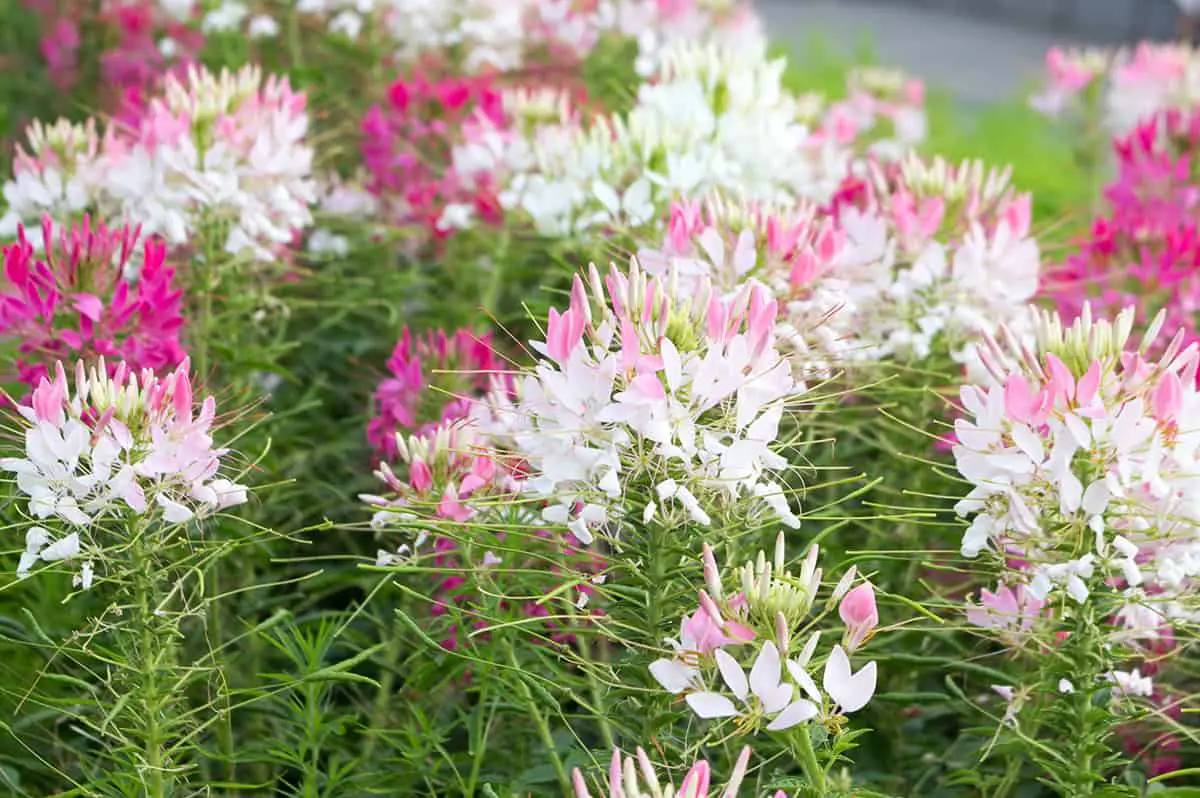
- Mature size: Grows to 3-5 feet tall
- Sunlight: Prefers full sun to partial shade
- USDA zones: Thrives in zones 10-11
Cleome, known as Cleome hassleriana, is an eye-catching annual that self-seeds efficiently. This means you may see new plants sprout the following year. You’ll recognize it by its distinctive flower clusters.
Each flower head of Cleome features an exotic appearance. You’ll notice blooms in shades of pink, white, or purple. Giving your garden interest, Cleome flowers from summer till frost. Enjoy their delicate, airy look as they attract pollinators.
Your soil should be well-drained for optimal growth. Water Cleome regularly to keep it flourishing. It’s quite tolerant of summer heat and continues blooming into the season. The plant adds height and texture to your garden space.
Keep in mind newer cultivars are often thornless. They are less likely to have the strong odor associated with older varieties. Cleome seeds develop in slender pods. When mature, the seeds drop, encouraging new growth in subsequent years.
Morning Glory (Ipomoea Purpurea)
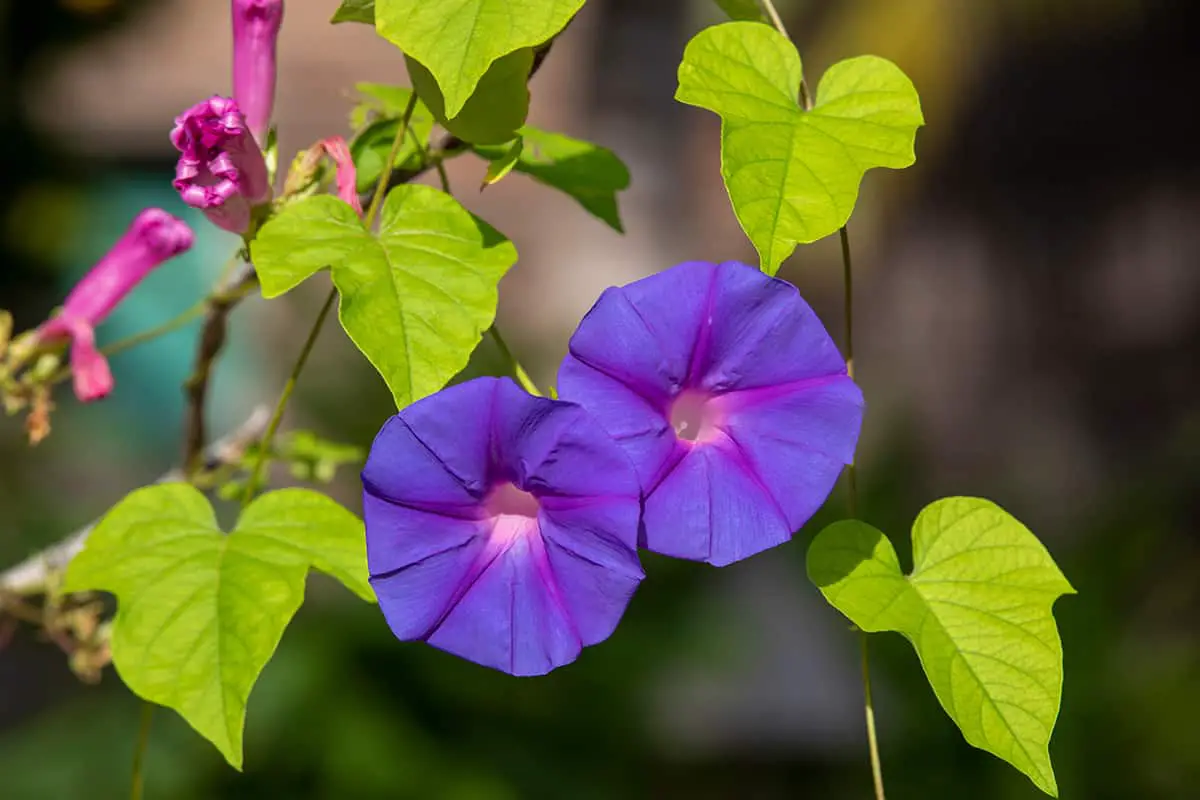
- Mature size: 10-16 feet high
- Sunlight: Prefers full sun
- USDA zones: Generally hardy
The Morning Glory, known botanically as Ipomoea purpurea, is a self-seeding plant. It boasts heart-shaped leaves and bold, trumpet-shaped flowers. This plant can add a splash of color to your garden with blooms that open in the cool morning hours.
Your Morning Glory will thrive in full sun and adapt to different soil conditions. It’s known for its climbing growth and can reach significant heights with adequate support. To ensure robust growth, soak the seeds for 12-24 hours to aid in germination.
It is important to note that in certain environments, the Morning Glory can be invasive. Regular maintenance is advised to keep it under control. You might also encounter a range of flower colors, from pink to blue. For a successful display, use well-drained, nutrient-poor soil.
Remember, while the plant is visually striking, it’s also resilient and can tolerate most soil conditions. Ensure you manage its growth, as it can self-seed and spread quickly.
Hollyhock (Alcea Rosea)
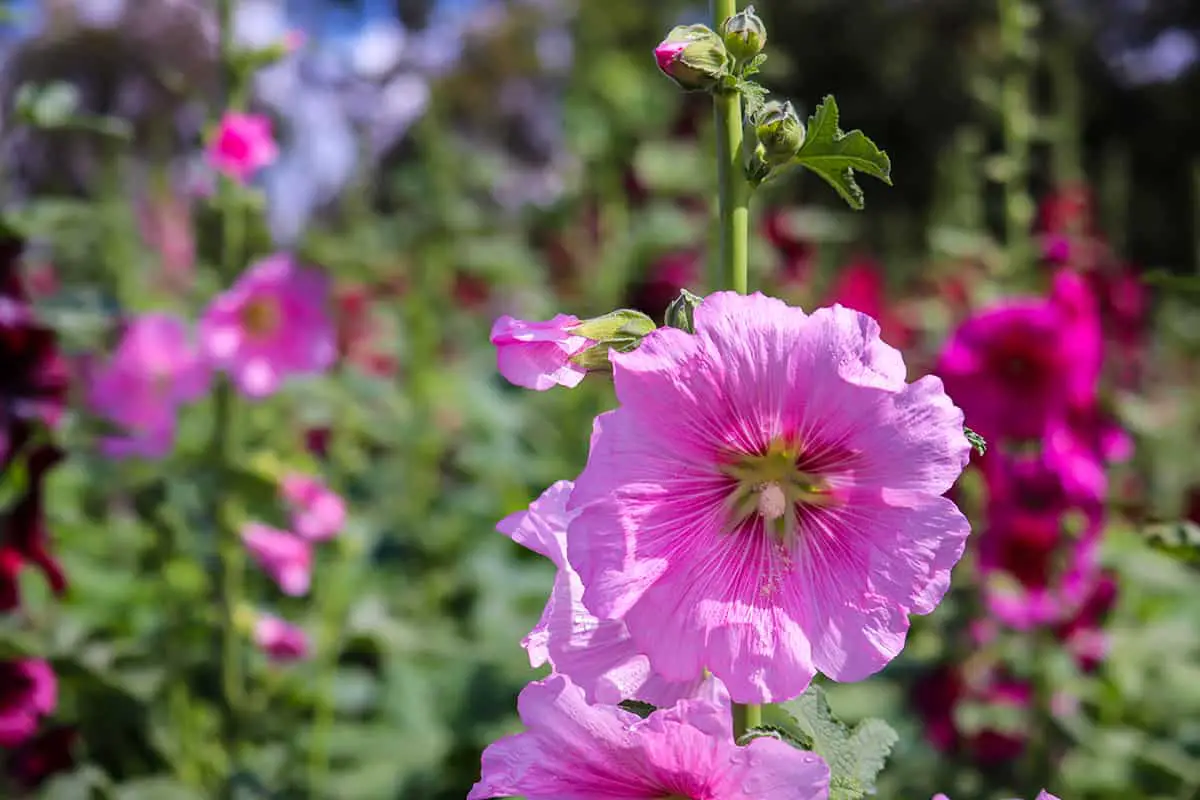
- Mature size: 6-8 feet height, 1-2 feet spread
- Sunlight: Prefers full sun
- USDA zones: Thrives in zones 2-10
Hollyhocks are herbaceous plants that enrich your garden year after year. They are known to reseed themselves, providing a lasting presence. With its origins believed to be in Turkey, the Alcea rosea thrives in gardens. This plant adds height and color diversity to your outdoor space.
Your garden will be graced with bell-shaped flowers of Alcea rosea during summer. These beauties reach between 6 to 8 feet tall. They spread about 1 to 2 feet, making a bold statement. Hollyhocks require full sun to flourish and display their full splendor.
In terms of climate adaptability, hollyhocks are quite hardy. They grow best in USDA zones 2 through 10. In the first year, they focus on leaf growth. In the second, they gift you with flowers. Occasionally, they act as short-lived perennials.
Hollyhocks are not just pretty faces in the garden. They can create a vertical element with their tall spikes. This plant works well along fences and walls.
Sweet William (Dianthus Barbatus)
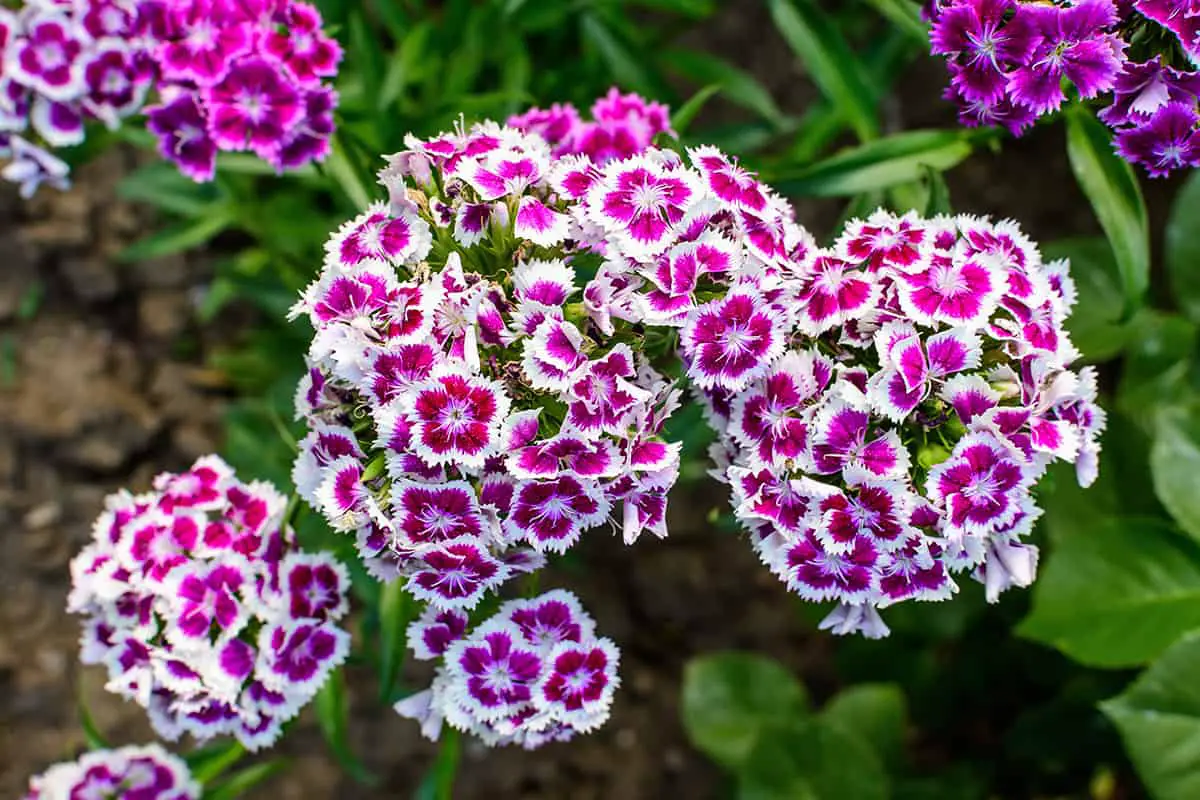
- Mature size: Grows up to 2 feet tall and wide
- Sunlight: Prefers full sun to partial shade
- USDA zones: Thrives in zones 3 to 9
Sweet William enchants your garden. This plant is a biennial, which means it lives for two years. In your first year of growth, you’ll see green leaves. Your second year rewards you with blooms. The flowers of Sweet William offer a range of colors. You can expect whites, reds, purples, and often two-toned variations.
When you plant Sweet William, you enjoy clusters of fragrant flowers. They attract butterflies and are excellent for cut flower arrangements.
For optimal growth, plant Sweet William in slightly alkaline, loamy soil. Make sure you place it in a location with good morning sun. If you’re in a hot summer climate, some afternoon shade is beneficial. Sweet William does well in cooler conditions too.
Remember to keep Sweet William’s soil moist. This is essential, especially during the blooming season. Regular watering helps to maintain healthy plants.
Zinnia (Zinnia Elegans)
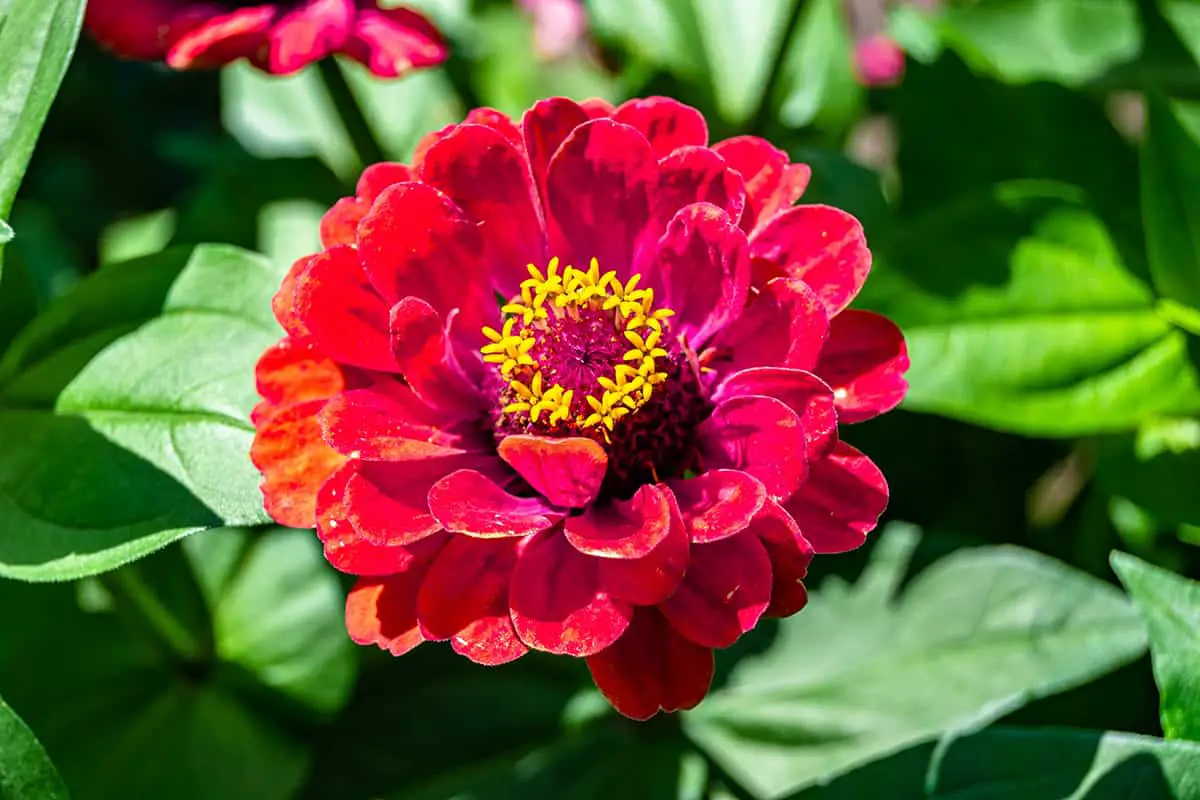
- Mature size: Grows to 1-3 feet in height
- Sunlight: Prefers full sun exposure
- USDA zones: Suitable for zones 2-11
Zinnia elegans is a vibrant, self-seeding annual. It graces your garden with a multitude of colors. You’ll find it easy to grow, bringing life to your backyard each year. Zinnia elegans, commonly called zinnia, thrives under full sunlight and in well-drained soil.
With proper care, zinnias reward you with a long blooming season. They can enhance your garden’s beauty from spring until frost. You’ll appreciate the zinnias’ hardiness and their preference for warm climates. These flowers make excellent, long-lasting cut floral arrangements too.
Zinnias offers a simple way to add color to your space. Be sure to sow seeds after the last spring frost for the best results. Remember, water them at the soil level to prevent mildew spotting on the leaves.
Alyssum (Lobularia Maritima)

- Mature size: Grows up to 12 inches tall and wide
- Sunlight: Thrives in full sun to partial shade
- USDA zones: Best in zones 5 through 9
Alyssum, also known as Lobularia Maritima, is a self-seeding plant that offers ground cover. It’s known for its sweet fragrance and clusters of small flowers.
Alyssum is an annual in cooler climates, but can behave as a perennial in milder regions. You’ll see it flourish in well-drained soil. During summer, trimming the plant can promote more blooms. Its resilience allows it to survive mild winters.
You can effectively use Alyssum to fill spaces between walkway stones. Its spreading habit is perfect for both garden edging and container planting. The variety of flower colors includes white, pink, and purple. They typically bloom from winter through spring.
Alyssum is also beneficial for attracting pollinators. Your garden will enjoy visits from beneficial insects, as the flowers easily accommodate tiny nectaries. Remember to water them moderately. Too much moisture can harm the plant’s growth.
Snapdragon (Antirrhinum Majus)
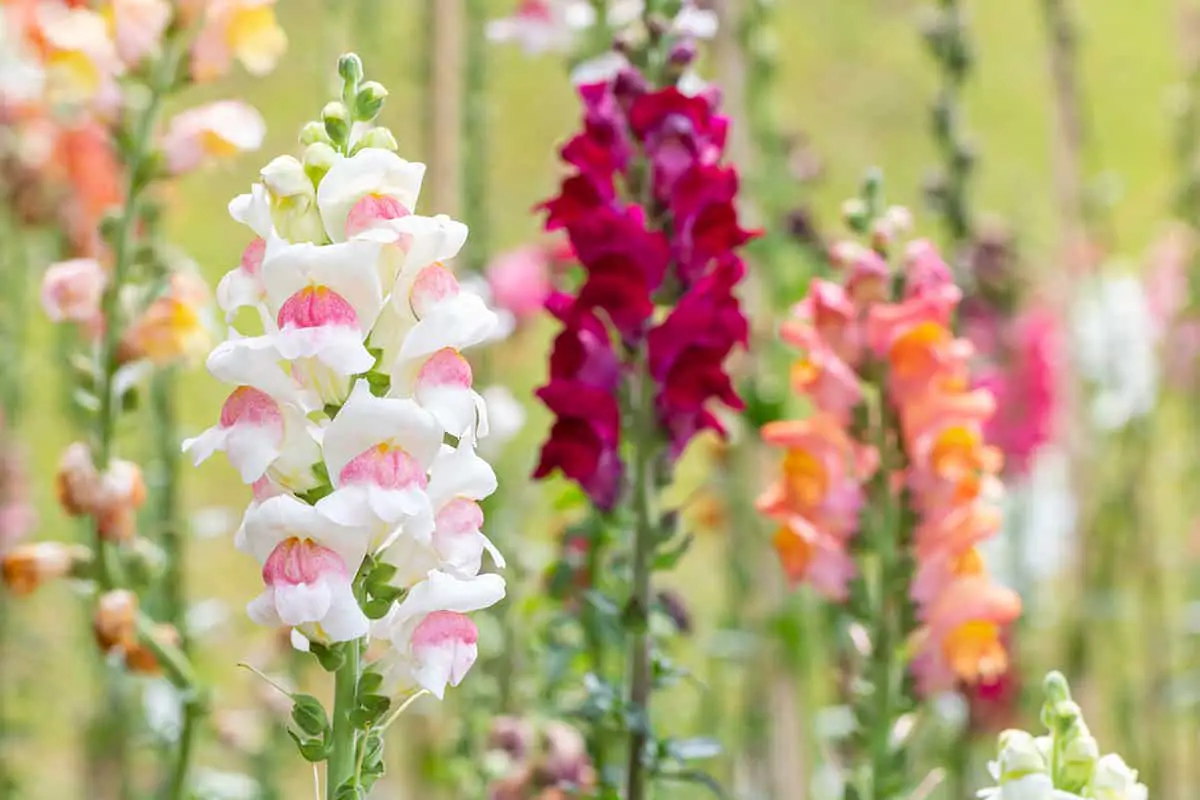
- Mature size: Heights vary from 6 inches to 3 feet
- Sunlight: Full to part sun
- USDA zones: Typically 7 to 11
Snapdragons are self-seeding plants that grace your garden annually. Once you plant them, these flowers self-propagate, sprouting up year after year. In spring, they burst into a brilliant display of colors, ranging from pale pastels to deep, vibrant hues. Snapdragons provide charm with their dragon-shaped blossoms that open and close like little mouths when squeezed.
Their growth is robust in cool weather, making them excellent for spring and fall blooms. Snapdragon plants can flourish in a range of soils, but they thrive in moist, rich, and well-drained conditions. Make sure to avoid overhead watering to prevent disease.
Deadheading spent flowers ensures further blooming and maintains the plant’s attractive appearance. With their capacity for self-seeding, they often return with surprising colors and forms, adding a sense of wonder each year to your garden.
Queen Anne’s Lace (Daucus Carota)
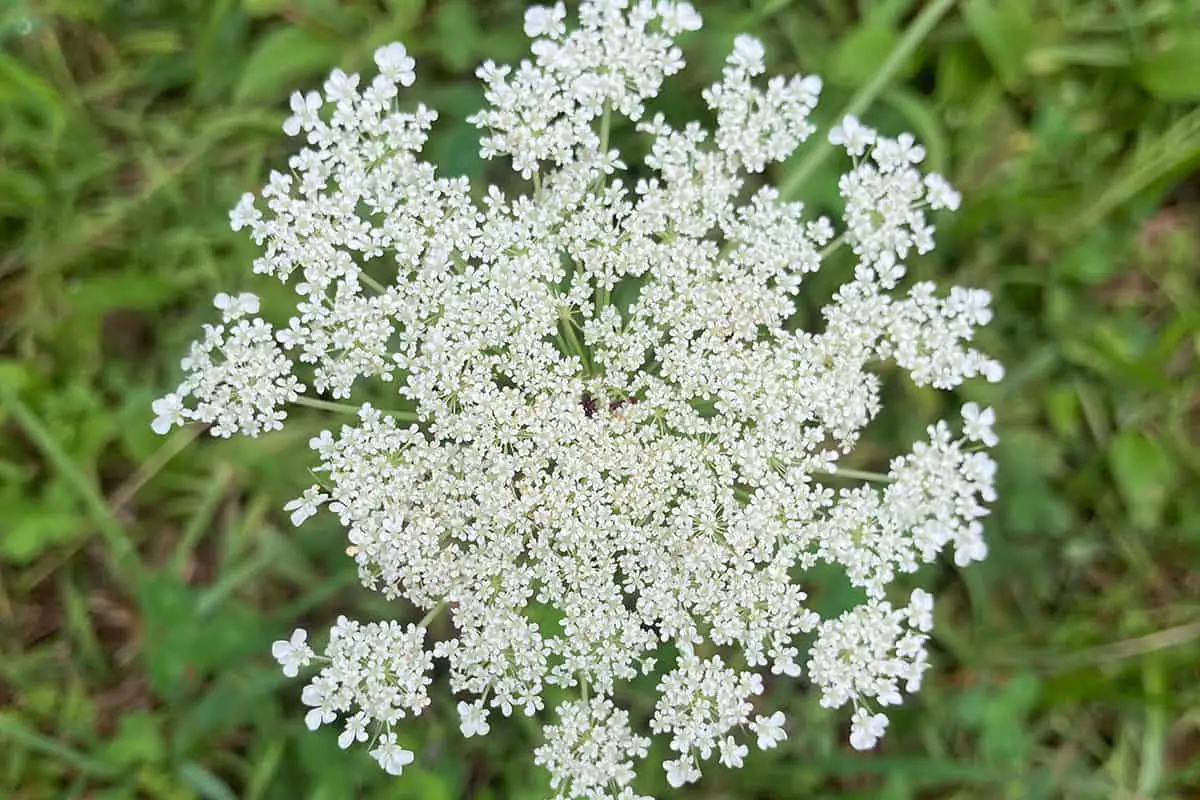
- Mature size: Up to 4 feet tall and 18 inches wide
- Sunlight: Prefers full sun to partial shade
- USDA zones: Hardy in zones 3-9
You can recognize Queen Anne’s Lace by its white, lacy flowers. They feature a single dark spot in the center.
Each flower head is a cluster of tiny flowers. These flowers attract beneficial insects to your garden. When seeds mature, the flower head curls to resemble a bird’s nest.
To maintain control, remove some of the flower heads before they seed. This will manage its spread in your garden.
Black-Eyed Susan (Rudbeckia Hirta)
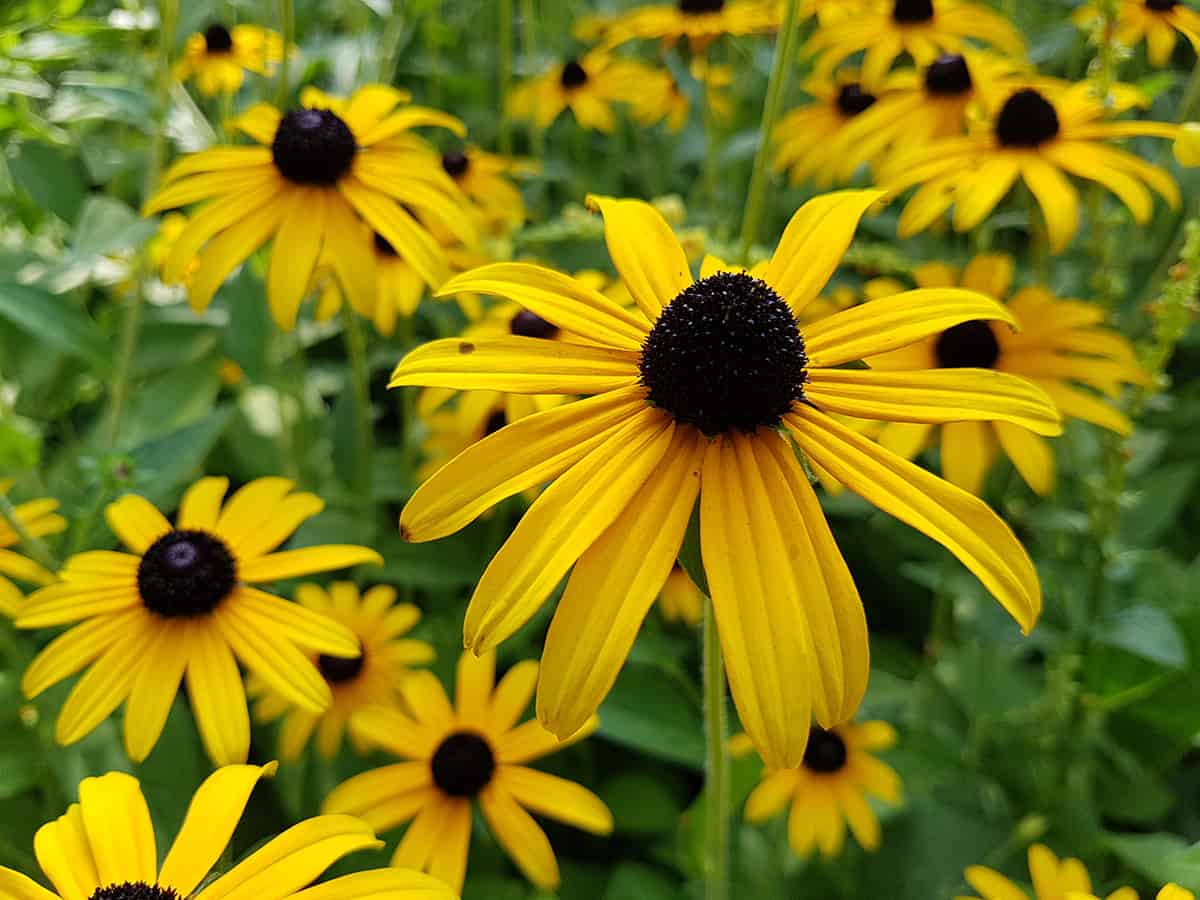
- Mature size: Grows 24 to 36 inches tall
- Sunlight: Full sun to partial shade
- USDA zones: Hardy in Zones 3-7
The Black-Eyed Susan is a cherished self-seeding plant. You’ll recognize its iconic vibrant yellow petals and dark brown centers. They add cheerful color to gardens.
You can expect Rudbeckia hirta to thrive in a range of soil types. They favor moist, well-drained soil. Your Black-Eyed Susan will bloom from June to October.
These flowers attract pollinators such as butterflies. They are also deer-resistant, making them garden-friendly.
Remember, they enjoy moderate fertility, so be cautious with fertilizers. Too much can restrict flowering.
Columbine (Aquilegia Spp.)
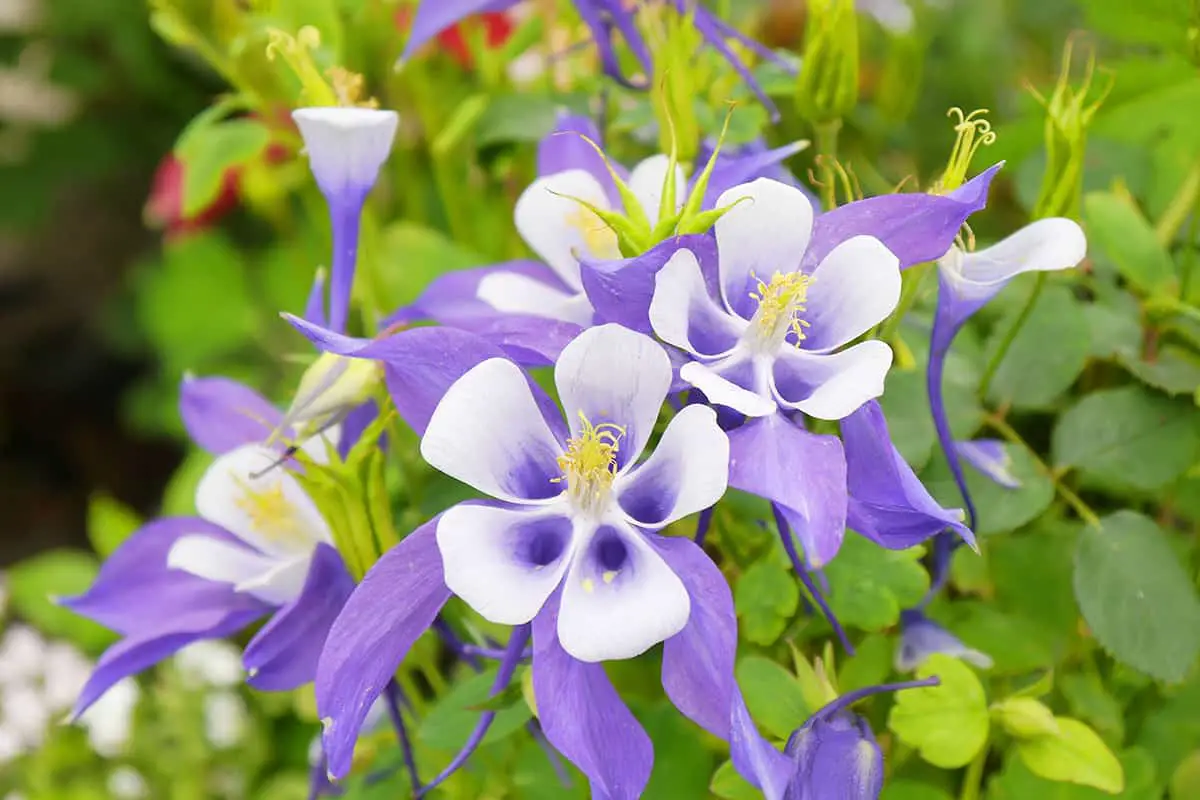
- Mature size: Grows up to 2 feet tall
- Sunlight: Prefers partial shade to full sun
- USDA zones: Thrives in zones 3 through 8
Columbine plants are colorful and attract pollinators. They belong to the genus Aquilegia and are known for self-seeding. You’ll often find them adding vibrancy to rain gardens and woodland areas.
With proper care, you can watch these beauties return year after year. They’re suitable for many garden types and appeal to hummingbirds and butterflies. Your efforts in growing them are well rewarded by their unique flower shapes.
Columbines have tubular flowers, usually red and yellow. These flowers are distinctive with their spurred petals. They bloom in early spring and can last up to a month.
Remember to give them space to spread. Columbines self-seed effectively. Their seeds need 3-4 weeks to germinate. You can expect new plants to bloom in their second year.
When foliage fades, you can trim the plants to the ground. This maintains their tidy appearance. Bear in mind, established plants can be divided in spring if you wish to spread their charm throughout your garden.
Coral Bells (Heuchera Sanguinea)

- Mature size: Grows up to 18 inches in height
- Sunlight: Prefers partial to full shade
- USDA zones: Thrives in zones 4 through 8
Coral Bells, known as Heuchera Sanguinea, dazzle in gardens. You can grow these perennials easily. They provide striking foliage and delicate flowers. This plant is a self-seeding variety, ensuring its presence year after year.
These perennials are a favorite amongst gardeners. You’ll see diverse leaf colors and bell-shaped flowers. Heuchera Sanguinea stands out due to its easy propagation. Its seedlings emerge without much help.
For best growth, place them in well-drained soil. They should receive ample moisture. To encourage self-seeding, allow some flowers to go to seed. New seedlings will appear the following season.
Coral Bells adapt to various environmental conditions. They resist pests and diseases well. You’ll find them a resilient addition to your garden.
Verbena (Verbena Bonariensis)
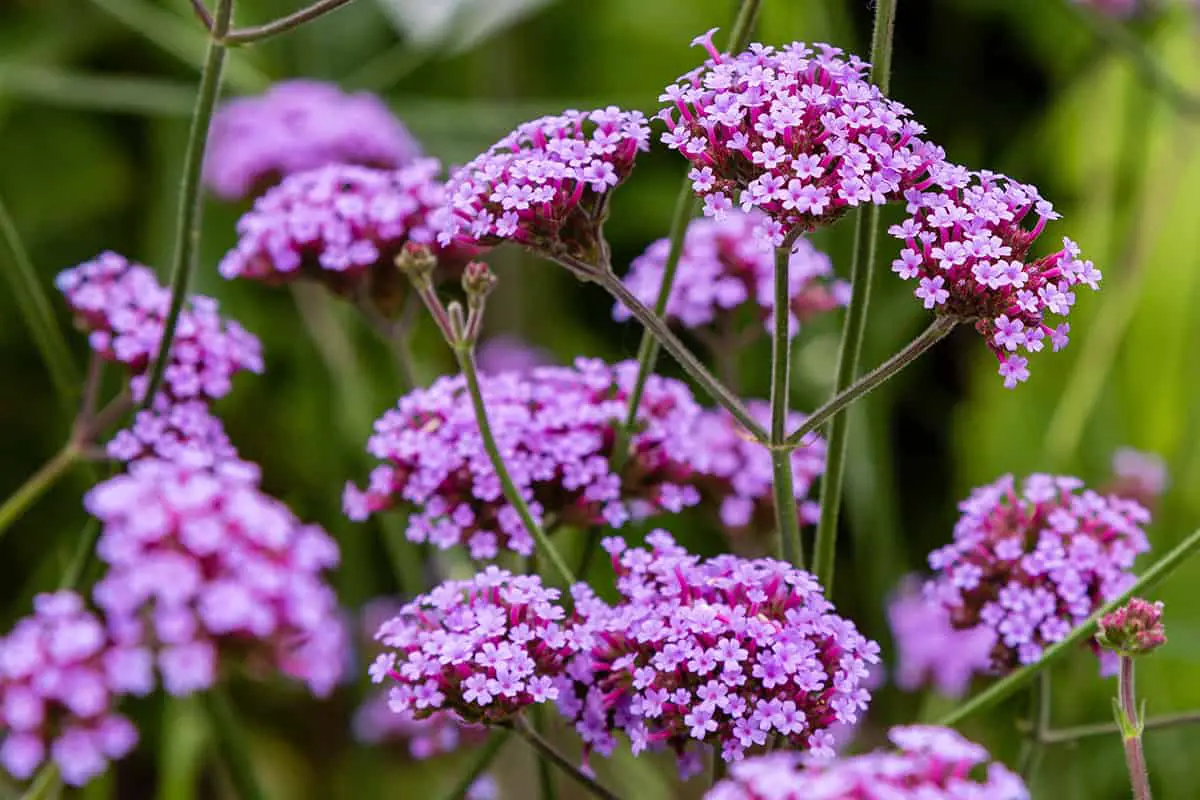
- Mature size: Grows 3 to 6 feet tall and spreads 1 to 3 feet wide.
- Sunlight: Prefers full sun but tolerates partial shade.
- USDA zones: Thrives in zones 7 through 11.
Verbena bonariensis, your ideal plant for height and splendor in your garden, often self-seeds. Recognized for its slender and lofty stature, this plant produces clusters of small purple flowers.
With verbena bonariensis, you’ll find maintenance is minimal. It’s a robust choice, tolerating heat and drought while requiring only basic care. The long stems topped with purple clusters add a light, airy feel to your garden. This plant needs well-drained soil and a sunny spot to flourish.
You’ll rarely confront serious pests or diseases with this verbena, though keep an eye out for powdery mildew.
